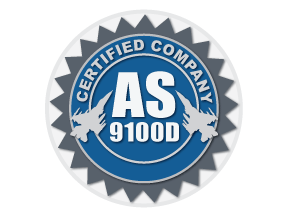
Our Mission
At Trident, it's not just about meeting your needs; it's about delivering top-notch quality at a reasonable cost. With our extensive industry experience, we possess the knowledge and efficiency to consistently satisfy our customers. Whether you're making a single purchase or seeking bulk orders, you can rely on us for exceptional products and outstanding service throughout the entire process.



Trident Manufacturing prioritizes more than just selling products and places a strong emphasis on the production process. Here are some key strengths.
1. Commitment to Quality:
Trident Manufacturing focuses on maintaining a high level of quality in its production process. This commitment ensures that customers receive reliable and well-crafted products.
2. Extensive Experience:
The company's extensive experience implies that they have likely developed a deep understanding of their industry and the needs of their customers. This experience can lead to better product development and customer service.
3. Customer Satisfaction:
Trident Manufacturing places customer satisfaction as its number one priority. This customer-centric approach is crucial for building long-term relationships and trust with clients.
4. Continuous Improvement:
By mentioning that they have taken the time and effort to ensure their production process is at the highest level possible, Trident Manufacturing suggests a commitment to continuous improvement and innovation.
5. Meeting Customer Needs:
The statement emphasizes that Trident Manufacturing is dedicated to meeting customers' needs. This responsiveness to customer requirements is essential for a successful business.
Trident Manufacturing is focused on delivering high-quality products, providing excellent customer service, and continually striving for improvement in its operations.
Our Background

Our Guidelines
Laser cutting manufacturing guidelines refer to a set of established principles and rules that govern the process of laser cutting in manufacturing. These guidelines are designed to ensure the efficient and accurate fabrication of various materials using laser technology. Here's an explanation of some key aspects of laser cutting manufacturing guidelines:
1. Material Selection:
The choice of materials is crucial in laser cutting. Guidelines may specify the types of materials that are suitable for laser cutting, taking into consideration factors like thickness, reflectivity, and heat conductivity.
2. Material Preparation:
Proper preparation of materials is essential. Guidelines may include recommendations for cleaning, surface treatment, and positioning of the material to ensure precise cutting.
3. Laser System Settings:
Laser cutting machines have adjustable settings for power, speed, and focal length. Guidelines provide recommended settings based on the material being processed, thickness, and desired cut quality. These settings affect the precision and speed of the cutting process.
4. Safety Protocols:
Safety is a top priority in laser cutting. Guidelines outline safety measures, including the use of protective gear, proper ventilation, and safe handling of laser equipment to prevent accidents and protect operators.
5. Design Considerations:
Effective laser cutting guidelines may include design recommendations, such as minimum feature sizes, clearances, and the avoidance of sharp corners, to ensure the manufacturability of parts.
6. Tolerance and Quality Standards:
Guidelines often define acceptable tolerances for the laser-cut parts, specifying the level of precision and accuracy that must be maintained. Quality standards may also be outlined to ensure consistent results.
7. Maintenance and Calibration:
Laser cutting machines require regular maintenance and calibration to operate optimally. Guidelines may provide schedules and procedures for maintenance to keep equipment in good working condition.
8. Waste Management:
Laser cutting generates waste in the form of cut-offs and fumes. Guidelines may include instructions for proper waste disposal and environmental considerations to minimize the impact of laser cutting on the surroundings.
9. Process Monitoring and Control:
Continuous monitoring of the laser cutting process is essential to maintain quality. Guidelines may recommend the use of sensors, cameras, or other monitoring systems to ensure that cuts meet specifications.
10. Documentation and Record Keeping:
Proper documentation of all aspects of the laser cutting process, including settings, materials, and quality checks, is often emphasized in guidelines to facilitate traceability and quality control.
A Labor of Love
At Trident Manufacturing, our love for producing quality extends beyond the tangible products themselves. It's about the satisfaction of our customers, the trust they place in us, and the knowledge that our work contributes to their success. This passion for quality is what drives us, motivates us, and sets us apart in the industry.
In essence, Trident Manufacturing's love for producing quality is not just a professional responsibility; it's a labor of love. It's a reflection of our dedication to our craft, our customers, and our commitment to excellence in all that we do.




